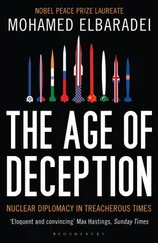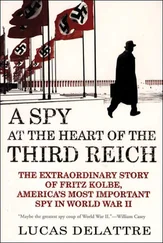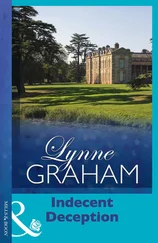Even his post-Soviet career was dotted with suspicious peccadilloes. These included a jackdaw-like fondness for trinkets and souvenirs, collecting caps, pens, badges and plaques and even guns. He was an inveterate junketer, collaring any foreign travel opportunities available. His political views were unusual by Estonia’s sober standards. He had a conspiratorial and eccentric worldview, prone to believe that Jews, Masons and shadowy international organisations wielded huge power behind the scenes. Jüri Pihl (the then head of Kapo) and others also recall a surprising habit of bad-mouthing Estonia to visiting foreigners. These included the late Colonel Michael Scott of SIS, who had been involved in cleaning up the mess after Operation Jungle, and retained a deep interest in Estonia, returning frequently after 1992 to visit old agents and advise on security. 5Simm cherished photographs of such meetings, particularly prizing one showing a handshake with the head of Israel’s Mossad. Though not a real intelligence officer, he was clearly attracted by the glamour of that world, and always eager for gossip and news of the inner workings of Estonia’s spy agency. Indeed, some thought he might move to a senior position there after retiring from the defence ministry. His wife claims that he was even offered a job there.
Close scrutiny of his financial affairs by a suspicious counter-intelligence officer might have followed up gifts from a generous German relative, or his rather heavy use of cash. His lifestyle, in a country where senior bureaucrats are well paid but not wealthy, was on the lavish side, with a big house in a desirable village outside Tallinn, a large Western-made jeep for transport, and a summer house and other properties to his name. (He claimed simply to make good use of his travel allowances and to have regained property confiscated during the occupation.) His unorthodox treatment of official documents should also have attracted more notice. He habitually hand-carried secret papers to NATO HQ in Brussels, claiming that only he had the requisite security clearance. But against regulations, he would stay overnight at a hotel there before delivering them. On occasion, colleagues noticed that envelopes had been opened, unwitnessed. 6But such incidents were rarely logged and never followed up. As head of security, Simm made the rules – and if he chose to break them, presumably he had a good reason for doing so. To most people, Simm was not an impressive or mysterious figure, but a friendly and amenable bureaucrat, doing a dull job well. ‘I never thought about him as the National Security Authority,’ recalls Indrek Tarand, then a senior official and now a member of the European Parliament. ‘It was just Uncle Herman doing something funny.’
Even his earlier role in the defence of Toompea Castle in 1990 was not universally seen as heroic: some Estonians there at the time believe he gave himself a nosebleed as a sign of valour. Mr Savisaar recalls: ‘He was brought before me red in the face and shivering. He gave me the impression of a coward. So we fired him.’ 7Jüri Pihl, who worked closely with Simm, describes his ability to deal with organised crime as ‘zero’. It was the steely young officers of his service (including one who later masterminded Simm’s arrest) who cleaned up organised crime in post-Soviet Estonia, not the then oafish and bungling officers of the uniformed police. In 1995 Mr Savisaar – then the Interior Minister in a coalition government – again crossed swords with Simm. He recalls a ‘somewhat theatrical’ red uniform ordered just for the force’s most high-ranking officers. ‘Like something out of an operetta,’ he says disdainfully. Simm was loyal, almost fawning. ‘Every morning he was sitting in my secretary’s office eager to report – but he could not cope.’ For a few months Mr Savisaar pondered how to dismiss his unwelcome subordinate. Then he summoned him and spoke of a ‘serious problem’, while laying his hand on a large file labelled ‘Herman Simm’ which was actually full of old newspaper. To his relief, Simm immediately resigned. ‘I was a little surprised that he then got a job at the Defence Ministry,’ says Mr Savisaar drily. [67] bn Mr Savisaar had found some evidence of Simm’s misuse of public funds, in a complicated story involving a dentist’s chair bought for his then wife’s clinic.
To be fired twice by a hate-figure is a strong recommendation. The hawkish officials of the defence and security establishment had long loathed Mr Savisaar, seeing him as a cynical and greedy machine politician with unhealthily close ties to the Kremlin. If Simm was their enemy’s enemy, his foibles were irrelevant. Behind the scenes, some did worry. Security officials at the Foreign Ministry made a point of refusing to let him see diplomatic telegrams. The Defence Ministry’s internal counter-intelligence service clashed with Simm on occasion, but its efforts to constrain his unorthodox habits were undermined by a conspiratorial and bungling approach: it once attempted to put several senior figures in the ministry under surveillance, supposedly as an exercise. It was easy for the self-assured Simm to arrange for such jumpy and troublesome junior officials to be fired, transferred or ignored.
Simm was a happy man as his career peaked. From his bleak and humble upbringing in the Stalinist era, he had made a successful career not only in the Soviet system, but in the one that had replaced it. On 20 November 2006 a press release marking his retirement (one of several documents mentioning him still on the Estonian Defence Ministry’s website in mid 2011) 8gives a ghostly reminder of the esteem in which he was then held. It praises the organisation he built up as ‘effective and efficient’; and notes that he signed agreements on the protection of classified information with nearly twenty countries. The Defence Minister added that without doubt Simm had shown ‘excellent professionalism’. He also received praise from the then director of the NATO Office of Security, Wayne Rychak. Yet had any of his colleagues known the truth, they would have arrested him on the spot – for nearly thirteen years the avuncular, dependable Simm was an agent of the SVR, Russia’s foreign intelligence service.
Simm was one element in the human minefield left behind in the former Soviet empire amid the collapse of communism. The nature of these devices varied widely. One kind were former dissidents, often now in influential positions, who had been protected from their own countries’ secret police by their KGB connections. Some also had sincerely cultivated ties with the Soviet authorities in the belief that Mr Gorbachev’s reforms offered the best chance of bringing change to their own stagnating societies. Another component was people who feared German hegemony in Europe, or who were sceptical of American intentions. Such feelings – as in Simm’s case – were sometimes compounded with jealousy at the rise of smooth young Atlanticist types to senior positions. A big latent category was officials from the old regime with undeclared KGB or secret-police connections. Many of the files containing such details were destroyed after the collapse of communism (typically as part of energetic efforts by the new leaders to conceal their own collaboration). What was left behind was deliberately muddled, so that it was unclear even whether the names listed were victims of the totalitarian system, or its accessories. This created a false sense of security for many who moved on to good jobs in the new system. They did not know that before communist power collapsed the KGB had removed its own records, and copies of the most important files belonging to other agencies.
As a result, the KGB ensured that even after the Soviet empire collapsed, it, and only it, had an accurate record of who had collaborated and why. This has provided Russian spymasters over the past two decades with a unique ability to blackmail and pressurise seemingly impeccable figures in post-communist public life, who believed that their guilty secrets were forgotten or buried. Suspicions in some countries swirl around household names – heads of government or of state, ministers, newspaper editors, academics and tycoons. But the fact that such connections are even rumoured makes them less dangerous. For someone in the public eye, cooperating with the secret service of a foreign power is risky and conspicuous. Russian spymasters may gain some secrets from them, but they can exert little influence through them. More damaging are senior second-rank figures out of the public spotlight, especially in the security world like Simm. They not only know secrets, but are also in a position to cover their tracks. They are thus archetypal targets for Russian intelligence.
Читать дальше












